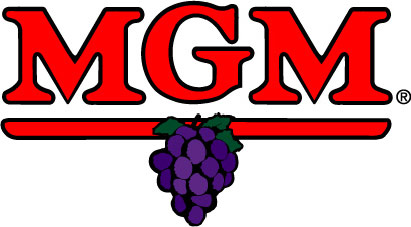Every holiday season, you can hear the crisp “Pop!” of bottles echoing through the halls. From office parties to family gatherings, this time of year is cause for celebration, and sharing a flute of sparkling wine or champagne with those around you is unlike anything else. But like so many of the world’s greatest creations, this revered bubbly beverage was discovered entirely by accident.
Legend has it that a 17th-century monk named Dom Pérignon who lived in France’s Champagne region is the one to thank. He stored his wine in deep cellars during the frigid French winter, but a lack of insulation stopped fermentation in its tracks, forcing Pérignon to bottle the wines early. But as spring temperatures rose, fermentation began again and the carbon dioxide put so much pressure on the bottles that they began to blow the corks right off the top-thus, champagne was born. (Truth be told, it was most likely many monks who developed the technique over the course of several years, but the moral of the story is the same: They discovered something delicious.)
The distinction between champagne and sparkling wine is little more than its origin: If it is made in the Champagne region, then it can officially be called “champagne.” Similar wines include Spanish Cava-a great accompaniment to most food-and Italian Prosecco, which makes a great palate cleanser. Any wine produced using the same method in the rest of the world is simply dubbed sparkling wine. Then, there are categories that go even further: Extra brut is the driest you can find, while brut is dry with hints of sweetness. Extra dry is a deceiving label, as this type is actually less dry and even sweeter than the others, while demi-sec is the sweetest of them all and is often sipped with dessert.
Italy produces many different kinds of sparkling wine and they’re often very affordable.
Most of Italy’s spumante (a general term meaning “the wine that froths”) is produced in the cooler northern regions, particularly Piedmont, Veneto and Lombardy. Asti, produced near the town of the same name, is not that sweet drink you may remember from years past. Asti has dropped the spumante from its name to distinguish itself from the many wines made elsewhere that borrowed the term for their sweet sparklers. This light, slightly off-dry sparkling wine with hints of apricot and peach, is made from 100 percent Moscato (Muscat) grapes. Its high acidity helps balance the sweetness, and Asti has a fresh, grapey taste. Moscato d’Asti, also made from Moscato grapes, has fewer bubbles than Asti and is light and crisp. Prosecco, hailing from the Veneto region in the foothills of the Alps, is produced from the grape of the same name (sometimes combined with Pinot Blanc or Pinot Grigio), and made into lightly sparkling (frizzante) and fully sparkling (spumante) styles. Fruitier than Champagne, its flavors can be reminiscent of ripe pears, melons, and sweet apples with hints of almonds.
Regardless of which type of bubbles you pick up this season, be sure to give an extra “Cheers!” to Monsieur Pérignon and the monks for this accidental miracle.




